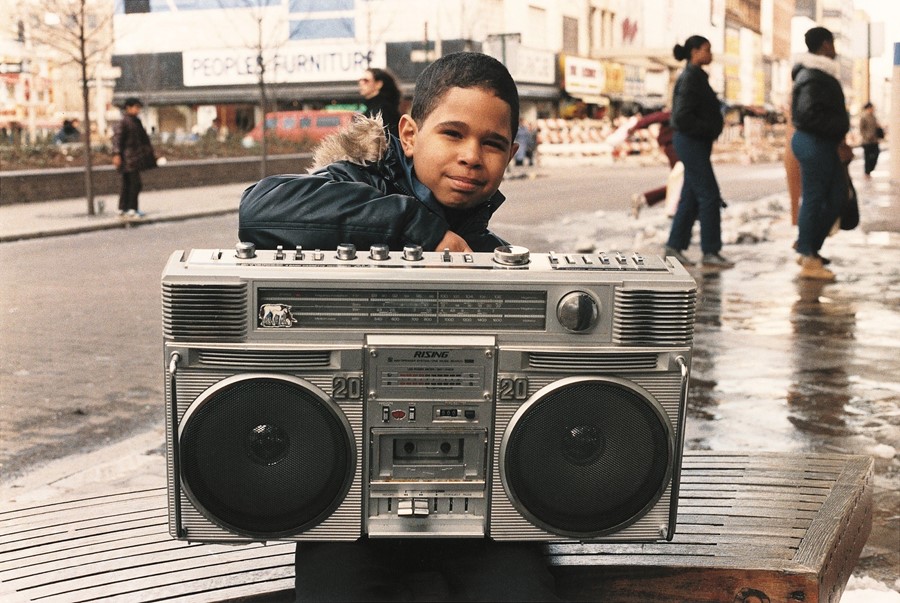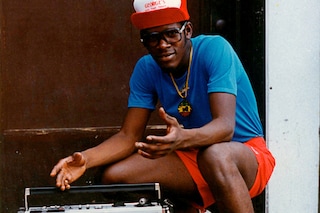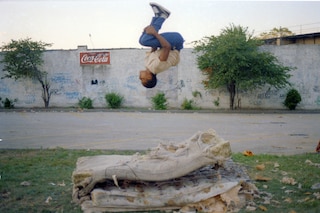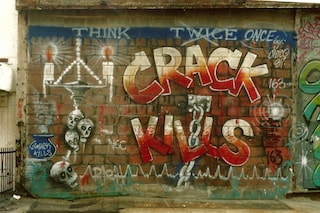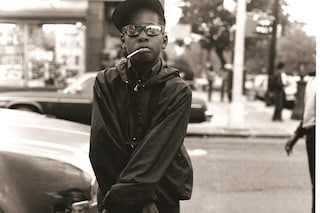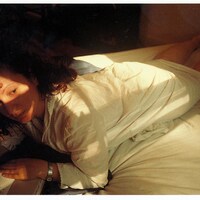The photographer’s quintessential education to his hometown – from Brooklyn’s streets in the 80s to drugs, graffiti and hip hop
Jamel Shabazz has visually represented urban New York for the last 40 years. Born and raised in 1960s Brooklyn during the civil rights movement and the Vietnam War, his surroundings both intimately and nationally exposed him to incredibly violent images that would instil him with an urge to present a different perspective. His work is testament to the beauty that can be found in the places considered least likely to provide it.
His first hero was his father, a professional photographer that he credits as the catalyst for his artistic passions. His second was a man he met while stationed as a soldier in Germany. Phil Harris, a fellow Brooklynite had a profound influence over Shabazz, with the photographer describing Harris as the greatest impact on his life. Surrounded by an intense culture of drug taking and hedonism in Germany, Harris showed Shabazz an alternative sprititually focused, drug-free lifestyle. Shabazz would take these lessons back to New York with him where he hoped to inspire others in a similar way.
Back in his hometown, the artistic expression of the social and political injustices of the African American community were in full swing and Shabazz found himself front and centre. During this time, hip hop music was gaining serious traction and he strongly connected to its groundbreaking movement born out of the black American experience. As well as aurally, he found a new creative outlet in the form of graffiti. An art accessible to anyone with a spraycan, Shabazz credits it to keeping his fellow artists focused and off drugs, something that would probably save their lives.The images he documented in this decade did what all great art should; allow the personal to become the universal and connect countless people in doing so. His photographs present a unique insight into the moments, memories and beauty of a community that has had to struggle to be heard, both then and now. Ahead of his latest exhibition, we speak to the legendary photographer as he offers up his favourite tracks in an exclusive playlist.
What inspired you to pick up your first camera and start shooting?
Jamel Shabazz: While most children my age were reading comic books, I was studying all of my father’s photographic books and publications with a keen eye. So by the time I picked up my first camera a few years later, I had a basic understanding of composition and subject matter, and the rest is history.
How do you feel New York's streets and 'street vibes' have changed over the 40 years you've been photographing it?
Jamel Shabazz: New York City has still maintained its vibrancy and constant flow of energy and magnetism that make it one of the greatest cities in the world. However, the high cost of living and the lack of affordable housing have contributed to the drastic increase in the homeless population amongst the working poor. In addition, we are now in a world full of technological gadgets that I find are causing folks to become disconnected and distracted like never before. Back in the days, it was very possible to engage a person in a basic conversation. Today the majority of people are pretty much in their own private worlds, thus making the old school way of communication somewhat outdated.
You grew up in Brooklyn – how do you feel growing up there has influenced your subject matter and subsequent photos?
Jamel Shabazz: Having been born and raised in the largest borough in New York City, and the fourth most populous city in the United States, I was exposed to a wide range of culture and diversity giving shape to my curiosity and creative process. The cornerstone of my earlier work (1975 – 1989) was done in the Flatbush section of Brooklyn. This neighbourhood was the home of many African Americans, and Caribbean Americans who came from the south and many of the island nations. I honesty feel that if I had lived in any other borough outside of Brooklyn, I would not have been able to document such cultural diversity.
“New York City has still maintained its vibrancy and constant flow of energy and magnetism that make it one of the greatest cities in the world...I honesty feel that if I had lived in any other borough outside of Brooklyn, I would not have been able to document such cultural diversity” – Jamel Shabazz
What influence do you feel your time in Germany holds over you and your work?
Jamel Shabazz: I feel very fortunate to have been stationed in Germany at the ripe age of 17. Military life was somewhat of a microcosm of the overall society; everything you find in mainstream society you find in military culture. Back in the 70s drug use was running rampant on almost every base, you had everything from heroin, hash, acid, Thai stick, and an assortment of uppers and downers, in conjunction with all the alcohol you could ingest. To my great benefit, I met a soldier by the name of Phil Harris from my hometown who was slightly older than me. He was a dedicated martial artist that did not smoke or drink, and was an aspiring photographer. He had the greatest impact on my life, and helped to build the foundation that I stand on today.
When I returned to New York during the summer of 1980, I would go on to inspire many young men and women in a similar spirit. As a result of seeing the deadly consequences that drugs had on American soldiers, I used my voice to inform many of my photographic subjects of the pitfalls that they were facing. Unfortunately, I could not predict the large scale and upcoming crack epidemic that would hit the streets of America, reminding me of all of the destruction I had witnessed just a few years earlier while being stationed overseas.
What influenced you while you're shooting?
Jamel Shabazz: I am a child of the 1960s so much of the music from that era really resonates with me. It was Sam Cook's song “A Change is Gonna Come" that made me look at the world with a clearer perception. I was most taken by protest songs that addressed the war in Vietnam and civil unrest in the country. Photographs from the war in Vietnam and the Civil Rights Movement also captivated me. Along with the music, they helped me to better understand the climate of society. Photographs from this time period, introduced me to a number a dedicated photographers; some who had put their lives in harms way to show the world the face of war and injustice. I became well acquainted with the work of documentary photographers, Robert Capa, Philip Jones Griffiths, Gordon Parks, Leonard Freed, Jill Freedman and Robert Sengstacke to name a few.
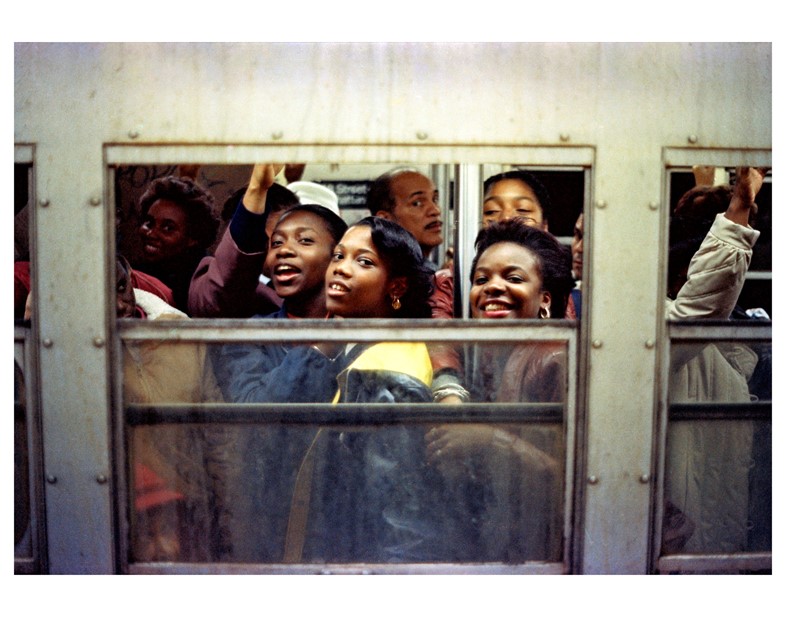
You mentor children with photography, how important do you feel the arts are to our youth?
Jamel Shabazz: During the past 30 years, art education has been taken out of many of the public schools here in the city. Art and music are just as important to one's development as science and math. Both the birth of hip hop and the introduction to graffiti during the 1970s are examples of how young people, many poor, learned to adapt and overcome the numerous obstacles in their paths. Many didn't believe that hip hop would last, but for the past few decades it has become an international phenomenon and language, giving voice and opportunities to a vast amount of under served people.
Same with graffiti; I know a number of highly respected artists. Lee Daze, Sharp Futura and Jamestop all grew up in New York City, many came from struggle. It was via graffiti that they learned a new form of self-expression that gave them visibility and purpose. So many artists have shared with me that if it had not been for graffiti, they would have probably met an untimely death. So, art education is important in the lives of all children and those artists that understand their roles in mentoring and passing on the torchlight to the next generation.
Is there a message you wanted to show through your work?
Jamel Shabazz: Ideally I would like for my work to inspire young and old alike to see the power of photography in documenting ones family and community. The ability to see is a divine gift; it would be wise to use it to inspire and provoke thought to make this world a better place.
Jamel Shabazz: Reflections from the 80s is on show from 6 – 29 March, 2015 at Cologne's Hardhitta Gallery. Click here for more
